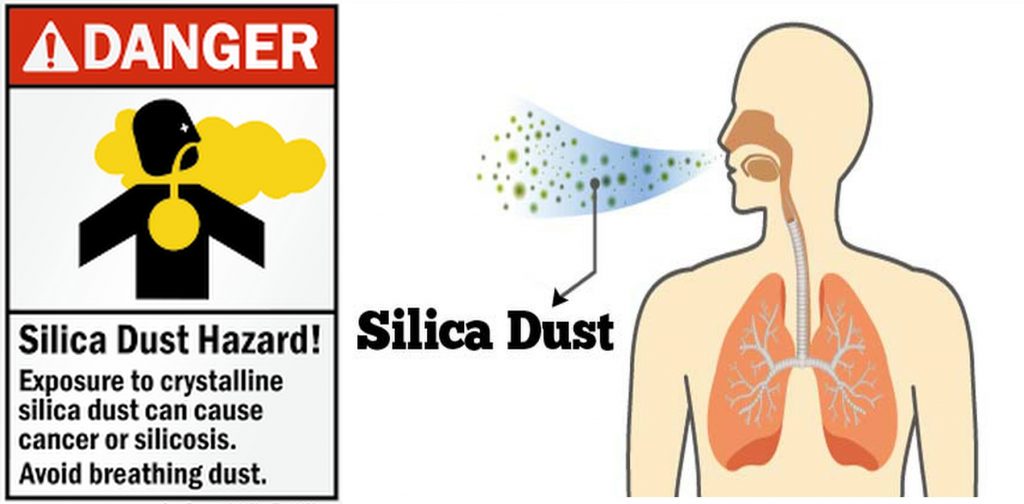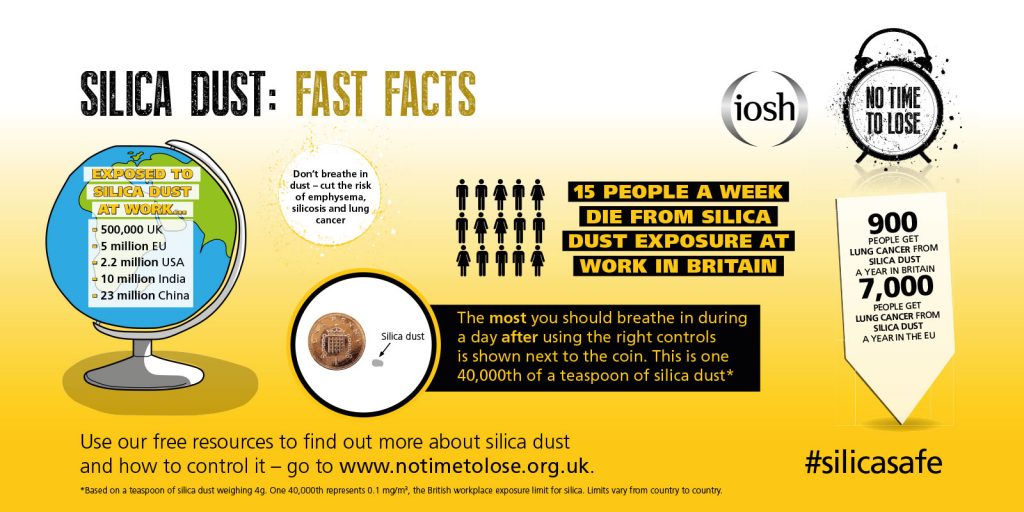
Gravel/Cement Factory Health Dangers
A February 2017 report produced for Alberta Transportation, Canada, describes the risks to human health from crystalline silica exposure caused by quarry operations. It quotes the International Agency for Research on Cancer, who list crystalline silica as a Group 1 (i.e. human) carcinogen. Respiratory exposure to crystalline silica can have a range of effects, including:
- Increased susceptibility to respiratory diseases, including bronchitis, chronic obstructive pulmonary disorder, tuberculosis, and lung cancer
- Increased risk of autoimmune diseases, such as scleroderma, rheumatoid arthritis, and lupus
- Possible kidney disease
- Lesions in the liver, kidneys, bone marrow, and lymph nodes
- https://www.transportation.alberta.ca/documents SWCRR_Human_Health_Risks_Crystalline_Silica.PDF
Silica dust produced by quarrying evidently brings a clear risk to residents living in the vicinity. Silica dust less than 10 μm can stay airborne long enough to travel up to 1 km beyond the occup-ational zone (the quarry itself). These smaller dust particles are the most damaging to the lungs. There is a lack of studies in this country of non-occupational health risks downwind of gravel quarry operations. However, some US authorities have shown concern over the danger of silicates to local residents, summarised by the US public health information platform Publiclab:-
‘The concentration of particulate matter that is cause for concern in non-occupational exposure is much lower than in occupational exposure. A person is at work typically only one-third of the day, and usually spends more hours at home than work, including sleep. Also, the exposed population in a non-occupational setting includes more vulnerable people, such as children and the elderly, than the workforce (which is often estimated as healthy young-adult and middle-aged men in exposure risk studies). Children breathe more deeply than adults, and their smaller body mass means that their relative exposure to pollutants is much higher. For all of these reasons, non-occupational exposure limits are set lower than occupational exposure limits to protect human health. For respirable crystalline silica, the difference between the two types of exposure limits can be orders of magnitude, as OSHA’s occupational exposure guidelines are to avoid exposure above 10 milligrams per cubic meter, while Vermont’s non-occupational exposure guideline is 0.12 micrograms per cubic metre.’
https://publiclab.org/wiki/silica-monitoring
What are the implications here for us? In their December 2017 response to Cemex’s planning application, WBC did not request them to provide documentation specifically on the public health implications of their proposed quarry/cement factory (NB: public health has been a UK local authority responsbility since 2013). Does this mean Wokingham council officers were unaware of them? That may be so. But our elected councillors should not be gambling with people’s health, at least until they have more reliable information available to them on the evident health risks.
Article by Richard R
